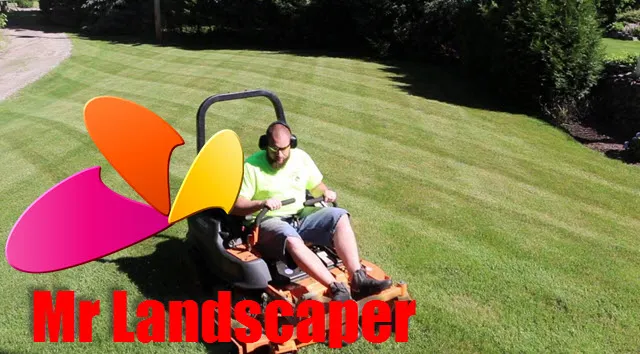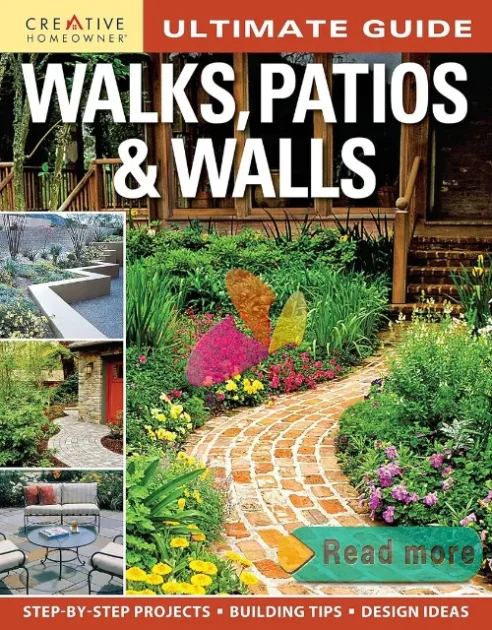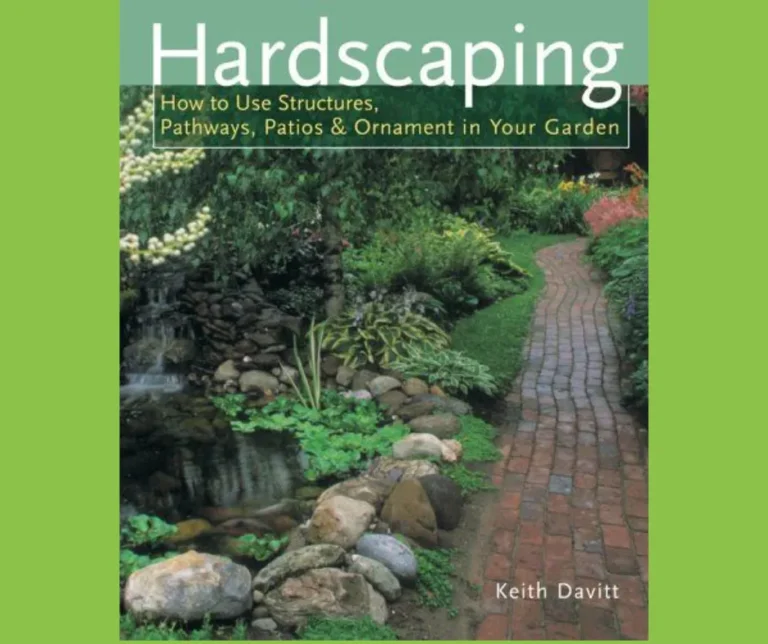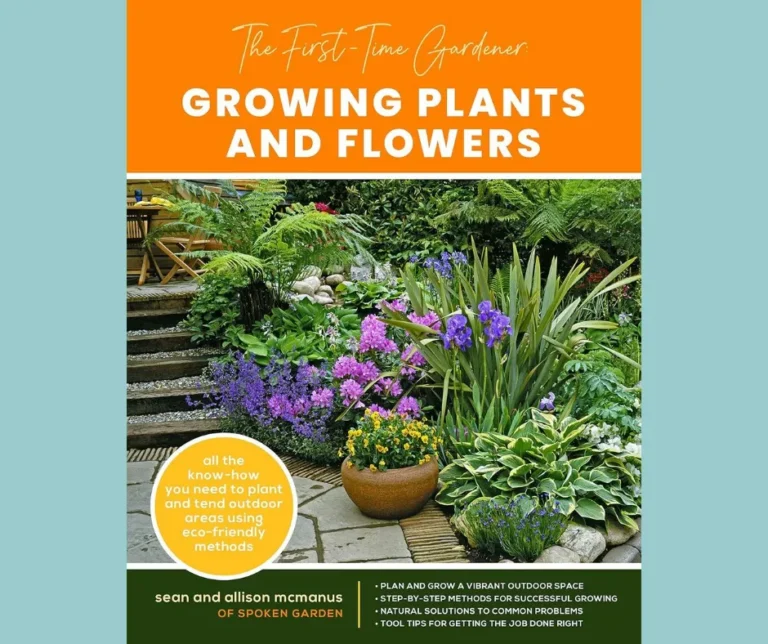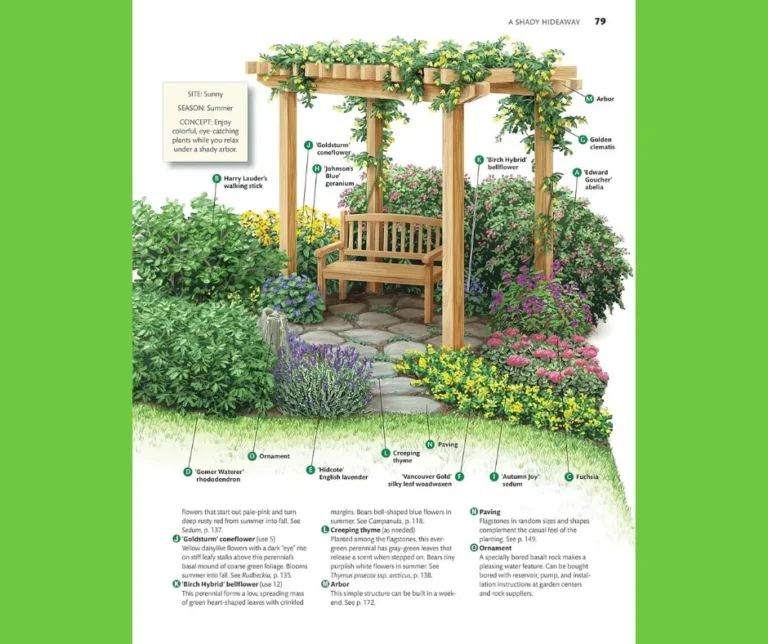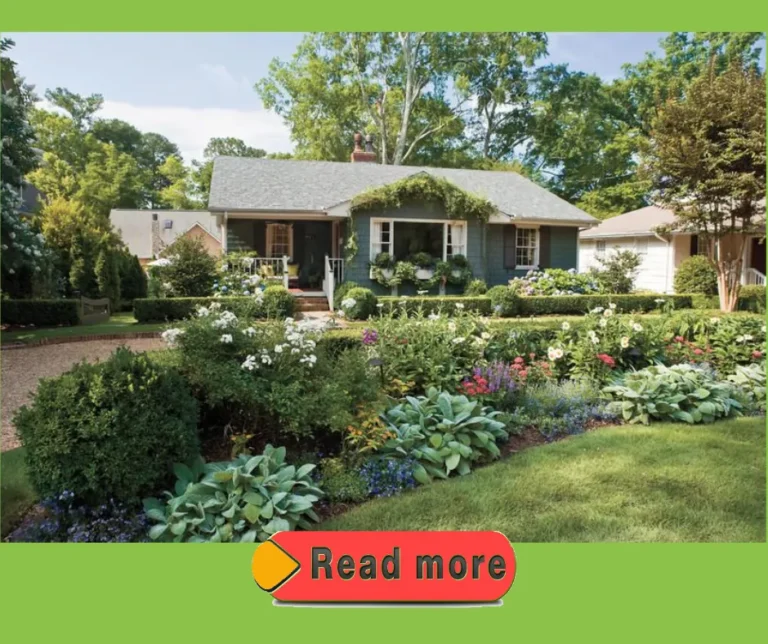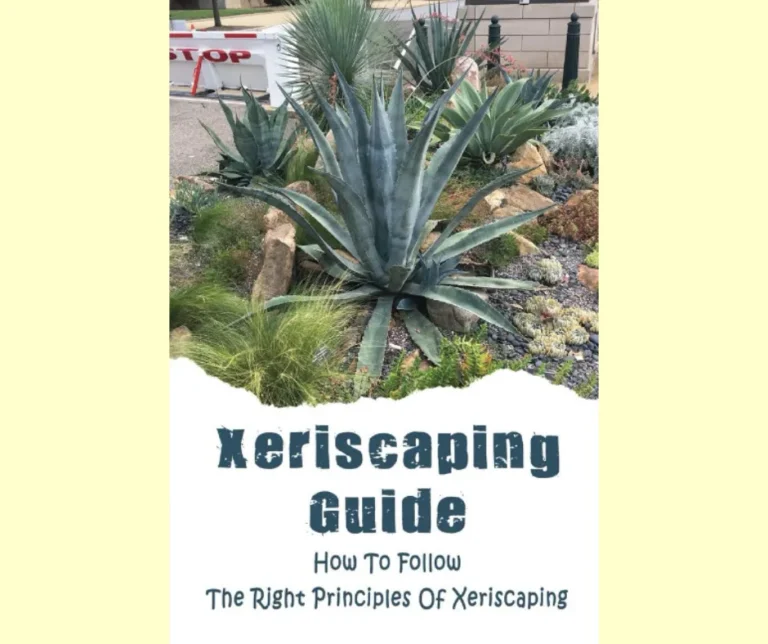DIY Landscaping with these Simple tips
Embarking on a DIY landscaping project can be both an exciting and daunting endeavor, especially when it involves the intricate elements of walks, patios, and walls.
The Ultimate Guide to Walks, Patios, and Walls: Step by Step Book serves as an invaluable resource for homeowners and gardening enthusiasts looking to transform their outdoor spaces into functional and aesthetically pleasing environments.
This comprehensive guide not only demystifies the process of creating beautiful pathways, inviting patios, and sturdy walls, but it also empowers readers with practical insights, expert tips, and detailed instructions tailored for varying skill levels.
Whether you’re an ambitious novice eager to roll up your sleeves or an experienced landscaper seeking fresh inspiration, this guide equips you with the knowledge required to turn your vision into reality.
From selecting the right materials and tools to mastering essential techniques, each chapter is designed to lead you through the project lifecycle, ensuring a rewarding and successful landscaping experience.
In this article, we will explore key concepts from the book, highlighting essential steps and considerations that can help you achieve your desired DIY Landscaping with these Simple tips landscape transformation, all while enhancing your outdoor living space’s beauty and functionality.
Table of Contents DIY Landscaping with these Simple tips
Transform your yard with DIY landscaping
Engaging in landscaping projects allows homeowners to create a personalized outdoor space that reflects their style and enhances the functionality of their yard.
With thoughtful planning and a bit of creativity, one can integrate elements such as pathways, patios, and retaining walls that not only improve the aesthetic appeal but also increase the value of the property.
Utilizing native plants and sustainable practices can further contribute to an eco-friendly environment while reducing maintenance costs.
Incorporating various textures, colors, and materials can lead to a visually pleasing landscape that draws attention and invites relaxation.
By identifying key areas that require improvement and setting clear goals, individuals can tackle their landscaping projects systematically.
This hands-on approach not only fosters a deeper connection to the space but also provides a sense of achievement as each project is completed, ultimately creating a harmonious outdoor oasis that can be enjoyed for years to come.
Explore step-by-step guidance in book
Readers will find comprehensive instructions designed to demystify the landscaping process, enabling them to undertake projects with confidence.
The structured guidance effectively breaks down complex tasks into manageable steps, ensuring that even novice landscapers can follow along.
Each section includes clear illustrations and practical tips, addressing common challenges and offering solutions that promote efficiency and creativity.
Additionally, the resource emphasizes the importance of planning and preparation, equipping individuals with the knowledge needed to select appropriate materials and tools.
This meticulous approach not only enhances the overall quality of the work but also encourages a sense of pride in the finished product.
By adhering to the provided framework, homeowners can transform their outdoor spaces into well-designed landscapes that are both functional and visually appealing, all while enjoying the process of creation.
Create inviting walks for guests
Incorporating inviting pathways into a landscape design significantly enhances the overall aesthetic and functionality of an outdoor space.
Thoughtfully planned walks guide guests through gardens, patios, and other areas, creating a welcoming atmosphere while also encouraging exploration.
The selection of suitable materials, such as natural stone, brick, or gravel, plays a crucial role in harmonizing the pathways with the surrounding environment.
The layout should complement existing features, drawing attention to focal points like flower beds, water features, or seating areas.
Moreover, attention to detail can elevate the walking experience.
Integrating soft lighting along the edges of the path, adding strategically placed plants, or incorporating benches invites guests to pause and enjoy the scenery.
By ensuring that pathways are both visually appealing and functional, homeowners can cultivate an inviting ambiance that enhances social interaction and appreciation of the landscape.
Utilizing these concepts not only showcases creativity but also fulfills the practical needs of both residents and their visitors.
Design functional patios for relaxation
Creating patios that promote relaxation requires a careful blend of comfort and functionality, allowing homeowners to enjoy their outdoor spaces to the fullest.
Key to this endeavor is the selection of appropriate furniture, such as weather-resistant seating, soft cushions, and versatile tables that can accommodate dining, entertaining, or simply unwinding with a book.
Incorporating shade elements, such as pergolas or umbrellas, not only enhances comfort but also encourages use during various times of the day.
Additionally, the strategic arrangement of seating areas fosters intimate conversations or family gatherings, ensuring that the patio becomes a cherished retreat.
Consideration of landscaping elements further enriches the relaxing atmosphere of the patio.
Incorporating greenery through potted plants or adjoining garden beds can create a soothing visual backdrop, while the sound of water features adds an auditory layer of tranquility.
Soft lighting options, such as string lights or lanterns, create a warm ambiance for evening enjoyment.
By thoughtfully integrating these elements, patios can transform into serene environments that invite relaxation and enhance the overall experience of outdoor living.
Build sturdy walls for privacy
Establishing solid barriers is essential for enhancing personal privacy in outdoor areas, allowing homeowners to enjoy their space without the disturbance of neighboring activities.
By investing in robust wall structures, such as stone or wooden privacy fences, property owners can create a secluded environment.
These walls not only serve as physical boundaries but also contribute to noise reduction, enabling a more peaceful ambiance.
The choice of materials and design should reflect the overall aesthetic of the property, seamlessly integrating the walls into the landscape while providing the desired level of seclusion.
In addition to their functional benefits, well-constructed walls can also serve as attractive features within a yard, promoting a sense of security and comfort.
Consideration should be given to height and thickness to optimize privacy while maintaining an inviting atmosphere.
Incorporating climbing plants or trellises can soften the appearance of these walls, enhancing both visual appeal and the natural feel of the outdoor space.
Ultimately, a carefully planned approach to building sturdy walls not only protects privacy but also elevates the overall enjoyment and usability of the patio and surrounding areas.
Learn essential tools for landscaping
A comprehensive understanding of essential landscaping tools is crucial for undertaking effective outdoor projects.
Tools such as shovels, rakes, and pruners form the backbone of any landscaping toolkit, enabling precision in tasks from planting to maintenance.
Additionally, investing in power tools like string trimmers and blowers can significantly enhance efficiency, allowing for a polished finish on larger properties.
Familiarity with each tool’s purpose and proper usage not only ensures better results but also promotes safety during operations.
Moreover, specialized tools designed for particular tasks, such as trowels for detail work or wheelbarrows for transporting materials, can streamline the landscaping process.
Selecting high-quality, durable tools not only improves performance but can also lead to long-term cost savings by reducing the need for frequent replacements.
By mastering the use of these tools, homeowners can take their landscaping projects from concept to reality, creating beautiful outdoor spaces that reflect their personal style and enhance their property’s value.
Discover plants suitable for landscapes
Selecting the right plant varieties is a fundamental aspect of successful landscaping, as it ensures aesthetic appeal and ecological balance.
When choosing plants, consider factors such as climate adaptability, soil type, and water requirements, which can vary significantly among species.
Native plants often provide the best results, as they are well-suited to local environmental conditions, require less maintenance, and support local wildlife.
Additionally, incorporating a mix of perennials, shrubs, and ornamental grasses can create a dynamic landscape that exhibits seasonal interest.
In urban settings, it’s essential to opt for plants that can thrive in confined spaces and withstand pollution while still contributing to the overall greenery of the area.
Drought-tolerant and low-maintenance options are increasingly popular, reflecting a growing awareness of sustainability and resource conservation.
Strategically grouping plants based on their sun and shade preferences can enhance growth and create visually pleasing arrangements.
By carefully selecting and positioning the right plants, homeowners can transform their outdoor spaces into vibrant, sustainable landscapes that enhance both beauty and functionality.
Understand soil preparation techniques effectively
Proper soil preparation is critical to achieving a thriving landscape, as it sets the foundation for plant health and growth.
Begin by testing the soil to determine its pH, nutrient levels, and texture, which can inform the necessary amendments to create an optimal growing environment.
Incorporating organic matter, such as compost or well-rotted manure, can improve soil structure, enhance moisture retention, and provide essential nutrients.
Additionally, tilling the soil to a depth of at least 12 inches helps break up compacted layers, allowing for better root penetration and air circulation.
Furthermore, it is essential to address drainage issues, as poor drainage can lead to waterlogged conditions detrimental to plant health.
Consider incorporating raised beds or amending the soil with sand or perlite to improve aeration and drainage where necessary.
Mulching around plants not only conserves moisture and suppresses weeds but also gradually enriches the soil as it decomposes.
By utilizing these soil preparation techniques, a solid groundwork is established, promoting robust plant growth and a flourishing landscape.
Enhance curb appeal with creativity
Utilizing creative design elements can significantly elevate the visual impact of a property, making it more inviting and memorable.
Incorporating unique features such as decorative walkways, vibrant flower beds, or artistic garden sculptures can transform ordinary spaces into captivating landscapes.
Consider using bold colors and varied textures in plant selection, along with layering heights to create depth and interest.
Pathways made from natural stone or reclaimed materials not only guide visitors but also add character and charm.
Lighting plays a crucial role in enhancing curb appeal, particularly during evening hours.
Strategically placed fixtures can highlight architectural features, illuminate pathways, and draw attention to garden beds.
Additionally, installing eye-catching elements such as trellises adorned with climbing plants or vibrant containers filled with seasonal blooms can provide focal points that engage the viewer’s attention.
Thoughtful combinations of these creative aspects foster an inviting atmosphere that enhances the overall charm of any property.
Achieve professional results through practice
Consistent practice is essential for mastering any skill, including landscaping.
By repeatedly applying design techniques and refining execution, individuals can develop a keen eye for detail and a deeper understanding of spatial dynamics.
Engaging in hands-on projects allows for experimentation with various materials and layouts, cultivating a sense of confidence that translates into professional-quality results.
Over time, this dedication to improvement fosters an innate ability to assess a landscape’s potential, ensuring that each project not only meets but exceeds aesthetic and functional expectations.
Furthermore, seeking feedback from peers or professionals can accelerate the learning process, providing insights that enhance future endeavors.
As one becomes more adept at recognizing the intricacies of design and implementation, the transition from novice to skilled landscaper becomes evident.
Ultimately, the commitment to ongoing practice not only elevates the quality of work produced but also instills a lasting passion for the art of landscaping, leading to innovative and personalized outdoor spaces.
In conclusion, the “Ultimate Guide to Walks, Patios, and Walls” serves as an invaluable resource for both novice and experienced DIY landscapers.
Its step-by-step approach demystifies the process of creating beautiful outdoor spaces, empowering readers to tackle projects with confidence and creativity.
By referencing this comprehensive guide, individuals can transform their yards into visually stunning and functional areas that enhance their property’s appeal and value.
As you embark on your landscaping journey, remember that careful planning and execution are key, and with the right tools and guidance, your dream landscape is well within reach.
